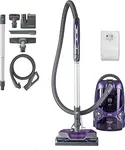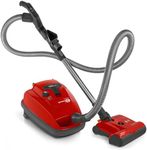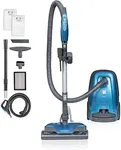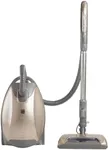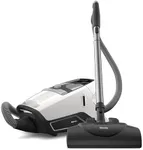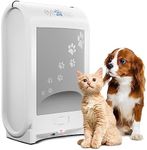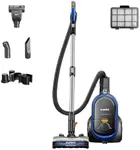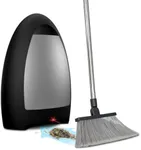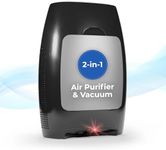Buying Guide for the Best Canister Vacuums
Choosing the right canister vacuum can make cleaning much easier and more efficient for your home. Canister vacuums are known for their flexibility, maneuverability, and ability to tackle a variety of floor types and above-floor surfaces. Before selecting a model, it's important to consider your home layout, carpeting style, presence of pets, and how often you vacuum. Pay attention to the major specifications, as each can dramatically affect how well the vacuum will meet your needs.Suction PowerSuction power refers to the vacuum’s ability to pick up dirt and debris. Higher suction makes the vacuum more effective, especially for thick carpets or pet hair. Suction is often measured in air watts or sometimes just described qualitively. Models can range from lower suction for delicate surfaces like drapes, to medium for hard floors and standard carpets, and high for plush carpeting and pet messes. If you mostly have hard floors, moderate suction is sufficient, while homes with high-pile carpet or lots of pets benefit from higher suction.
Filtration SystemA filtration system keeps dust and allergens inside the vacuum, rather than recirculating them. The most common types are standard filters, HEPA filters, and multi-stage systems. HEPA filters are excellent for allergy sufferers as they trap smaller particles. Standard filters work for basic cleaning needs. If you have allergies or pets, look for a model with a HEPA or advanced filtration system, otherwise a basic filter may be enough.
Weight and ManeuverabilityThe weight of a canister vacuum affects how easy it is to carry and move it around furniture or up stairs. Lighter models are more maneuverable but sometimes have smaller dust capacity, while heavier ones might offer more features. If you have a multi-level home or need to reach tight spaces, consider a lightweight, compact design. For large open spaces, weight is less of an issue.
Dust CapacityDust capacity measures how much debris the vacuum can hold before needing to be emptied. It's typically indicated in liters. Smaller capacities (1-2 liters) are lighter and easier to empty but need to be emptied often, while larger ones (over 3 liters) are better for big homes or less frequent emptying. Large households or heavy-use homes should lean toward higher capacity, while small homes or less frequent vacuumers can manage with less.
Attachments and ToolsAttachments add versatility, making it easier to clean furniture, drapes, car interiors, and tight spaces. Typical attachments include crevice tools, upholstery brushes, and motorized pet hair tools. Some models offer basic setups, while others have extensive accessory kits. Choose a vacuum with attachments that fit your cleaning habits, like special pet tools for homes with animals or turbo brushes for thick carpets.
Cord Length and Hose ReachCord length and hose reach determine how far you can clean before needing to change outlets or reposition the vacuum. Short cords and hoses are more manageable in small spaces, while longer ones allow you to cover larger areas easily. If you have large rooms or long hallways, look for longer cords and hoses. Smaller homes or apartments might not need as much reach.
Bagged vs. BaglessCanister vacuums come in both bagged and bagless versions. Bagged vacuums use disposable bags to collect debris, which is cleaner to empty and better for allergy sufferers, but requires ongoing bag purchases. Bagless models use a reusable container that you empty yourself, which can save money and reduce waste, but may release dust when being emptied. If you prefer low-maintenance and clean disposal, choose bagged. For cost savings and convenience, bagless may be better.

